Papers by Maribel Portilla
Florida Entomologist, Apr 18, 2023
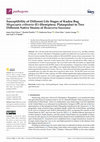
Pathogens
This is the first study that examined and compared the survival, LC50, and RR50 estimates of Mega... more This is the first study that examined and compared the survival, LC50, and RR50 estimates of Megacopta cribraria F. (Hemiptera: Plataspidae) nymphs and adults that were exposed to two native Beauveria bassiana isolates (Previously codified as NI8 and KUDSC strains) at four concentrations. The greatest reduction in survival and mortality was observed primarily on or after 10 d post-exposure to B. bassiana isolates. Survival of early instars (2nd, 3rd) were not affected by either strains or concentration at 3 d and 5 d post-exposure. Survival of later instars (5th) and adults was significantly reduced when exposed to the KUDSC strain at all concentrations. Comparison of dose–mortality values (LC50) using resistance ratios (RR50) were significantly different between life stages of the kudzu bug for both strains of B. bassiana. The LC50 values showed that kudzu bug adults are more susceptible than any other life stage when exposed to either strain. The KUDSC strain was more pathogenic t...
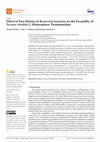
Microbiology Research
The southern green stink bug (SGSB) Nezara viridula (L.) (Heteroptera: Pentatomidae), has become ... more The southern green stink bug (SGSB) Nezara viridula (L.) (Heteroptera: Pentatomidae), has become a significant pest of soybean and cotton in southern Central America and in the lower mid-southern U.S. A laboratory colony of SGSB was used to evaluate the effect of two isolates of Beauveria bassiana (Balsamo-Crivelli) Vuillemin (Hypocreales: Cordycipitaceae) including the commercial strain GHA and the Mississippi Delta native NI8 strain on the fecundity of this pest. Water control, Tween-80, and four concentrations of each strain (n × 104, 105, 106, and 107) were evaluated. Both native and commercial isolates with the highest concentrations were susceptible to the SGSB. Females, however, were much more pathogenic to both strains than males. Lethal concentration of the native strain (236 spores/mm2) was 1.4-fold lower (326 spores/mm2) than the GHA strain for females evaluated 20 d post-exposure. Greater concentrations (1.1 × 107 spores/mm2, 5.2 × 106 spores/mm2) were required to kill m...
Southwestern Entomologist
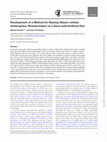
Journal of Insect Science, 2021
A method for rearing the southern green stinkbug, (Nezara viridula L.) (Heteroptera: Pentatomidae... more A method for rearing the southern green stinkbug, (Nezara viridula L.) (Heteroptera: Pentatomidae), using a modified lygus semi-solid artificial diet was developed. First to second-instar nymph were reared in a density of 631.5 ± 125.05 eggs per Petri-dish (4 cm deep × 15 cm diam). Second instar to adult were reared in a density of 535.0 ± 112.46 s instar nymphs per rearing cage (43 × 28 × 9 cm). Mating and oviposition occurred in popup rearing cages (30 × 30 cm), each holding 60–90 mixed sex adults of similar age. Adults emerged 35.88 ± 2.13 d after oviposition and survived for an average of 43.09 ± 9.53 d. On average, adults laid 223.95 ± 69.88 eggs in their lifetime, for a total production of 8,099 ± 1,277 fertile eggs/oviposition cage. Egg fertility was 77.93% ± 16.28. Egg masses held in petri-dishes had a total hatchability of 79.38% ± 20.03. Mortality of early nymphs in petri-dishes was 0.64% ± 0.12 for the first instar and 1.37% ± 0.45 for second instar. Late nymphal mortalit...
Southwestern Entomologist, 2020
Biocontrol Science and Technology, 2020
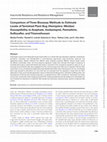
Journal of Economic Entomology, 2018
A laboratory colony of tarnished plant bugs reared solely on a meridic diet was exposed to acepha... more A laboratory colony of tarnished plant bugs reared solely on a meridic diet was exposed to acephate, imidacloprid, permethrin, sulfoxaflor, and thiamethoxam in dose-response experiments using floral-foam, glass-vial, and dipped-leaf assays. Results indicated that different assay methods produced different relative results across the different insecticides. Dose-and time-response regression models also indicated that length of exposure of tarnished plant bugs to insecticide-treated plant tissue is important. Time of exposure required to reach an LC 90 at estimated recommended field rates suggested that the recommended lower field rate of acephate (0.56 kg ai/ha) would reach an LC 90 of exposed tarnished plant bugs between 48 and 96 h post initial exposure. An LC 90 of tarnished plant bugs exposed to permethrin (0.11 kg ai/ha) was not predicted from the regression modes over the 168-h observation; lower recommended application rates of imidacloprid (0.053 kg ai/ha), sulfoxaflor (0.053 kg ai/ha), and thiamethoxam (0.042 kg ai/ha) reached projected LC 90 s between 96 and 168 h of exposure. Collectively, the results of this study corroborate current existing procedures for tracking tarnished plant bug resistance to insecticides, but also illustrate the importance of additional field studies that empirically associate assay results to projected field control.
Journal of Economic Entomology, 2018
Two artificial diets, including the modified NI diet and a new artificial diet used for Lygus spp... more Two artificial diets, including the modified NI diet and a new artificial diet used for Lygus spp. were evaluated as an alternative food source for rearing the southern green stink bug, Nezara viridula (L.). Both the modified NI diet and a new artificial diet had survival to adult stages, with 97.33% and 74.57%, respectively. The modified NI diet showed 100% survival from first through fourth instar nymphal stages. Adult Development was significantly shorter on the modified NI diet (30.37 SE 0.30 days) versus the new diet (32.77 SE 0.16 days). Longer male and female longevity, higher fecundity, and larger egg mass sizes were found on the modified NI diet. However, the fertility and hatchability was higher on the new diet. A life table was constructed and a novel rearing method for N. viridula developed.
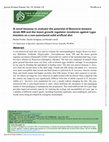
Journal of insect science (Online), 2014
A non-autoclaved solid diet was used to evaluate the entomopathogenic fungus Beauveria bassiana (... more A non-autoclaved solid diet was used to evaluate the entomopathogenic fungus Beauveria bassiana (Balsamo) Vuillemin (Hypocreales: Clavicipitaceae) strain NI8 and the insect growth regulator novaluron (Diamond® 0.83EC insecticide) for control of the tarnished plant bug, Lygus lineolaris (Palisot de Beauvois) (Hemiptera: Miridae). The diet was composed of toasted wheat germ, ground lima bean meal, soy flour, yolk of chicken eggs, inhibitor, and agar. It was prepared in one step by blending the ingredients in boiling water. The diet was used to bioassay L. lineolaris from the second instar to the adult stage. Fourth and fifth instars and adults of L. lineolaris were more susceptible than second and third instars to infection by B. bassiana, whereas second, third, and fourth instars had higher mortality than fifth instars 10 days after exposure to novaluron. No effects on longevity were observed in adults treated with novaluron when compared with the control, but longevity was significa...
Southwestern Entomologist, 2010
Journal of Insect Science, 2009
Journal of Insect Science, 2011
Environmental Entomology, 2008

Annals of the Entomological Society of America, 2011
This is the first report of sequence-specific microsatellite markers (simple sequence repeats [SS... more This is the first report of sequence-specific microsatellite markers (simple sequence repeats [SSRs]) of fall armyworm, Spodoptera frugiperda (J.E. Smith) (Lepidoptera: Noctuidae), an economically important pest of crops on the Americas. We isolated 192 microsatellite markers by using pyrosequencing and screened 15 individuals from eight isofamilies collected from three geographical areas: Puerto Rico (PR), Texas (TX), and Mississippi (MS). Isofamilies resistant to Cry toxins from Bacillus thuringiensis (Berliner) (Bacillales: Bacillaceae) also were included. Cluster analysis was performed to determine the potential use of these SSRs in discriminating populations, and colonies were grouped with a reliability of 100% estimated by bootstrap. In this analysis, colonies from TX grouped away from those from PR, but the two MS isofamilies grouped with TX and PR separately. Genetic distance within isofamilies ranged between 0.22 and 0.56, and the minimum distance between isofamilies was 0....
Journal of Insect Science, 2015


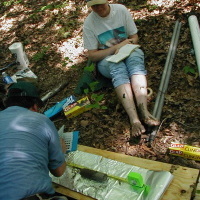

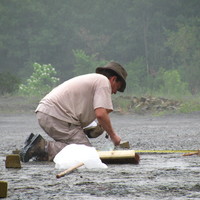





Uploads
Papers by Maribel Portilla